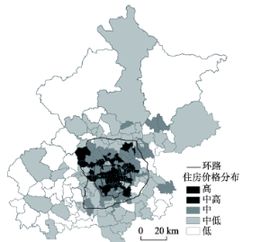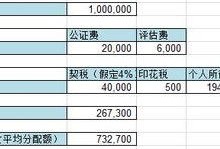房产区位怎么说英文(房产区位讲解)
- 房产
- 2025-07-25
- 84
Navigating the English Language: How to Express Real Estate Location
In the world of real estate, the way you describe a property's location can significantly impact its appeal to potential buyers. Whether you're a real estate agent, a developer, or simply someone looking to sell a property, understanding how to express a property's location in English is crucial. Here's a comprehensive guide to help you navigate the English language when discussing real estate location.
General Descriptors
When describing a property's location, it's essential to start with general descriptors that give a broad idea of the area. Here are some commonly used terms:
- Central: Located in the heart of the city or town.
- Suburban: Situated on the outskirts of a city or town, typically offering a quieter lifestyle.
- Rural: Found in a countryside setting, often characterized by open spaces and a slower pace of life.
- Coastal: Located near the sea or ocean, offering scenic views and access to beaches.
- Mountainous: Situated in mountainous terrain, providing a picturesque and serene environment.
Specific Directions and Landmarks

To provide a more precise location, you can use specific directions and landmarks:
- Close to: Expresses proximity to a particular place.
- Near: Similar to "close to," but can imply a slightly greater distance.
- Adjacent to: Literally means next to, indicating a direct neighboring relationship.
- Across from: Describes a location opposite another point of interest.
- Adjacent to: As mentioned earlier, it indicates a direct neighboring relationship.
- Within walking distance of: Implies that the destination is reachable on foot.
- Just off: Suggests that the location is slightly away from a main road or highway.
Transportation Access
Transportation access is a critical factor in real estate, so it's important to mention how accessible the property is:
- Close to public transportation: Indicates proximity to buses, trains, or subways.
- Near a major highway: Suggests easy access to major roads and highways.
- Just minutes from: Implies a short driving distance to a particular destination.
- Easy access to: A general term that can be used for various forms of transportation.
Proximity to Amenities
The availability of amenities can greatly influence a property's value, so be sure to mention the following:
- Near shopping centers: Implies proximity to stores and shopping facilities.
- Close to schools: Suggests the property is in a family-friendly area.
- Adjacent to parks: Indicates the presence of recreational spaces.
- Within walking distance of restaurants and cafes: Conveys a vibrant and lively neighborhood.
Community and Environment
The community and environment are also important factors to consider when describing a property's location:
- Gated community: Suggests a secure and exclusive living environment.
- Family-friendly neighborhood: Implies a safe and welcoming area for families.
- Historic district: Indicates a location with historical significance and charm.
- Eco-friendly area: Suggests a commitment to sustainability and environmental consciousness.
Conclusion
Expressing a property's location in English effectively requires a combination of general descriptors, specific directions, landmarks, transportation access, amenities, and community characteristics. By using these terms and phrases, you can provide a comprehensive and appealing description that resonates with potential buyers. Remember, the way you communicate a property's location can make all the difference in the real estate market.























